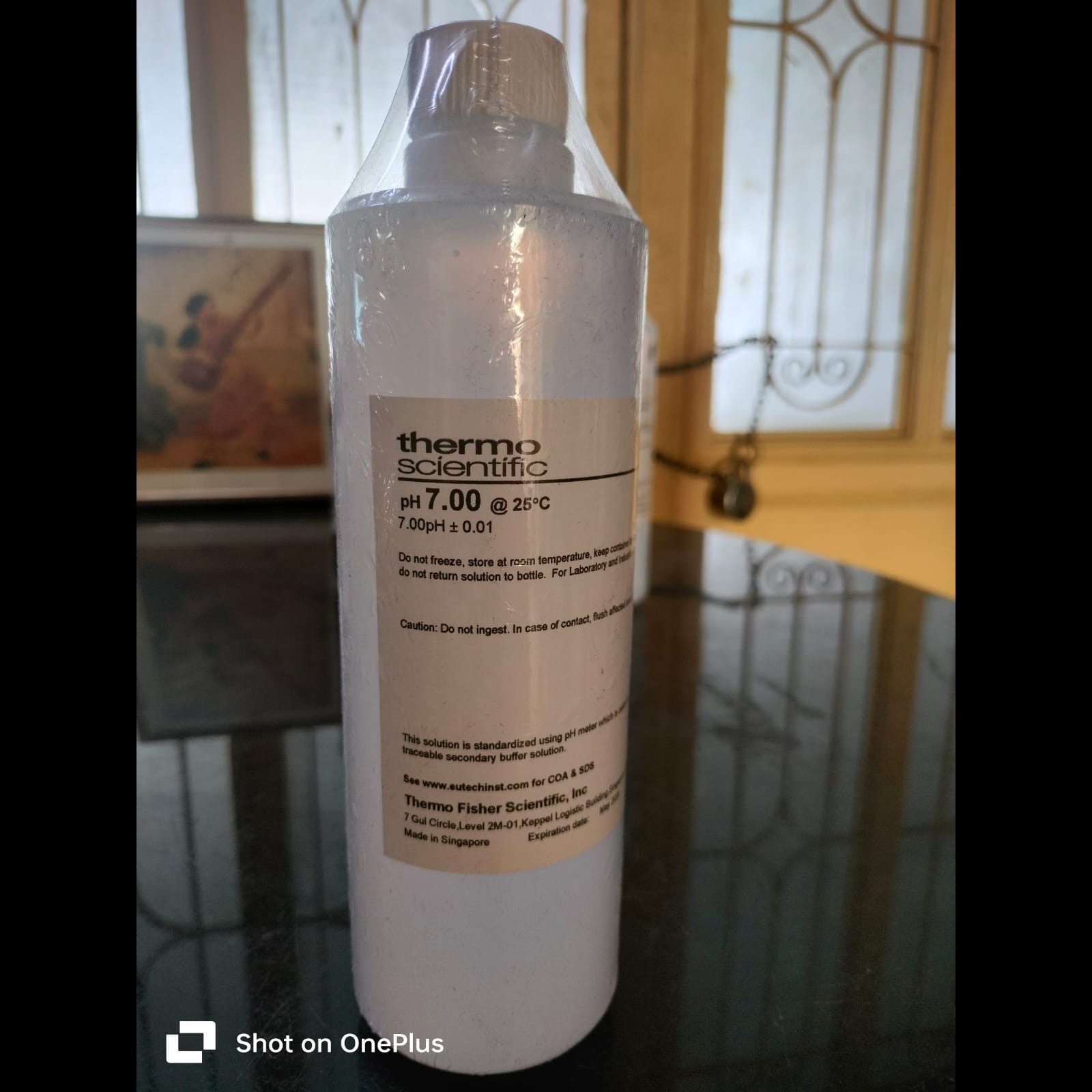
2025-10-10T07:21:06
A buffer solution at pH 7 (often neutral) is a stable, neutral solution that resists changes to its pH when acids or bases are added. It can be a phosphate-based solution prepared by mixing potassium dihydrogen phosphate and disodium hydrogen phosphate, or a standard pre-made solution used for calibrating pH meters and ensuring accurate pH readings in labs, water purification, and food industries. What a pH 7 Buffer Solution Does Resists pH Change: It maintains a stable pH of 7, even when small amounts of acid or base are introduced, unlike pure water which would experience a significant pH shift. Acts as a Neutral Standard: Because it is a stable, neutral solution, it is used as a reference for calibrating pH meters and other equipment that measure pH. pH Meter Calibration: It's one of the most common buffers used to set up and verify the accuracy of pH meters. Industrial Applications: It is used in industries where maintaining a neutral pH is critical, such as water treatment plants, the food industry, and in hydroponics. Ready-Made: Many commercial buffer solutions at pH 7 are sold as ready-to-use liquids, often in bottles. Phosphate Buffer: One common type is a phosphate buffer, which can be prepared by dissolving specific amounts of potassium dihydrogen phosphate and disodium hydrogen phosphate in distilled water. Key Characteristics Neutrality: At a stable pH of 7, the concentrations of hydrogen (H+) and hydroxide (OH-) ions are equal, making it a neutral solution. Traceability: Many pH 7 buffer solutions are traceable to national or international standards (e.g., NIST), ensuring accuracy and reliability.

Have a question? Ask here!
Required fields are marked *